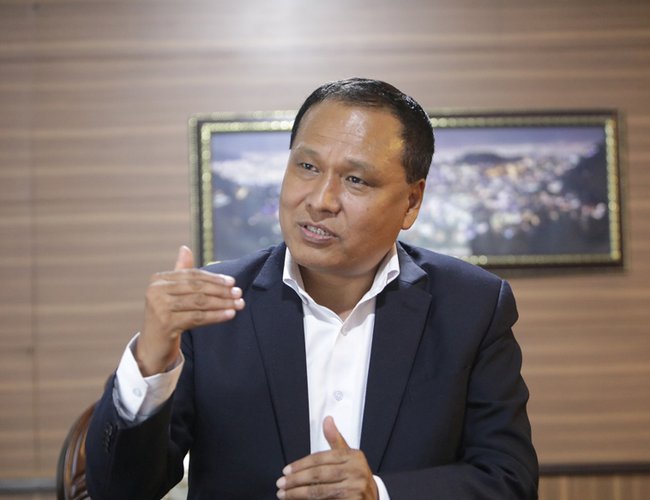
Since assuming the position of Managing Director of the NEA eight years ago, Kul Man Ghising has rarely taken breaks, frequently putting his work duties ahead of spending time with his family on holidays and weekends.
Completing generation, transmission, and distribution projects across the country is crucial for ensuring a reliable power supply. Nevertheless, numerous obstacles such as issues related to the Land Acquisition Act, resistance from the public regarding the use of private land, legal decisions, environmental considerations, and inefficient contractors have caused substantial delays in transmission line projects, distribution improvements, and hydropower advancements.
Many of these projects face challenges due to minor administrative obstacles and resistance from local communities. MD Ghising has been able to address these issues by organizing meetings with community members, local authorities, and elected representatives during his site visits.
The addition of new generation projects and the efficient transmission of power from hydropower facilities to the distribution network are essential for ensuring a continuous power supply.
MD Ghising's regular field visits are crucial in overcoming obstacles and ensuring the successful completion of projects.
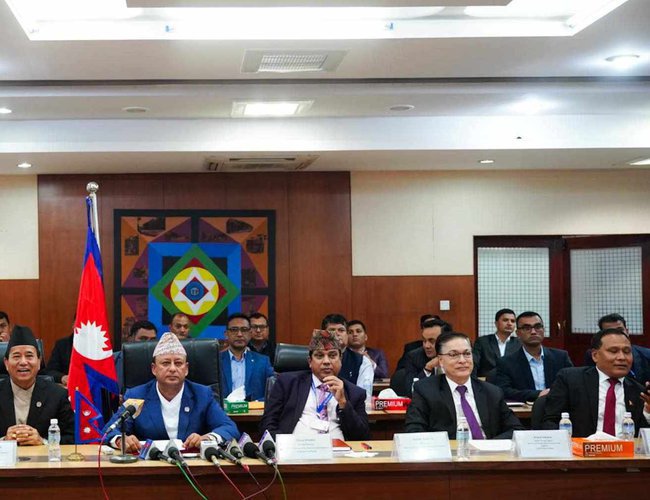
Upon assuming the role of Managing Director of the Nepal Electricity Authority (NEA), MD Ghising faced delays in several generation projects, including the 456 MW Upper Tamakoshi, 14 MW Kulekhani III, and 30 MW Chameliya, as well as various strategic transmission line initiatives such as the 400 kV Inaruwa-Dhalkebar-Nijgadh, 220 kV Kali Gandaki Corridor, 220 kV Koshi Corridor, Hetauda-Bharatpur-Bardaghat-New ButwalTrishuli-Kathmandu, Trishuli 3 B Hub-Chilime, 132 kV Chameliya-Attariya Transmission Line, Solu Corridor, and Kabeli Corridor.
From a 132 kV transmission line, Nepal has now upgraded to a 220 kV to 400 kV transmission line with the capacity to transmit 5000 MW of electricity. This marks a significant transformation in the electricity sector in Nepal under the leadership of Ghising.
With 99 percent of the population now having access to electricity and an increasing reliance on it for cooking and transportation, effective management of supply and demand has become crucial. MD Ghising has made a firm commitment that his agenda will remain unchanged for as long as he serves as MD of NEA, with no room for engaging in any conspiracies regarding his position.
Having successfully ended load shedding in the country eight years ago, MD Ghising is now focused on ensuring the continuous supply of power. During a visit to the Baharabise Substation on November 30, he instructed contractors and officials to adhere to the project timeline and inspected the ongoing construction of a 400 kilovolt (KV) substation in Baharbise Township, Sindhupalchok.
The construction of a 12-phase 400 kV substation project has begun to support the transmission of electricity from planned hydroelectric projects on the Tamakoshi and Sunkoshi rivers and their tributaries into the national grid, improving the domestic power system. Additionally, the construction of 220-132 kV and 132-11 kV substations at the same site has been completed, with equipment testing finished successfully. All necessary equipment for the 400 kV twelve-bay substation, which utilizes Gas Insulated System (GIS) technology, has been delivered to the site. Civil works for the structures housing the power transformers have been completed and are currently being connected.
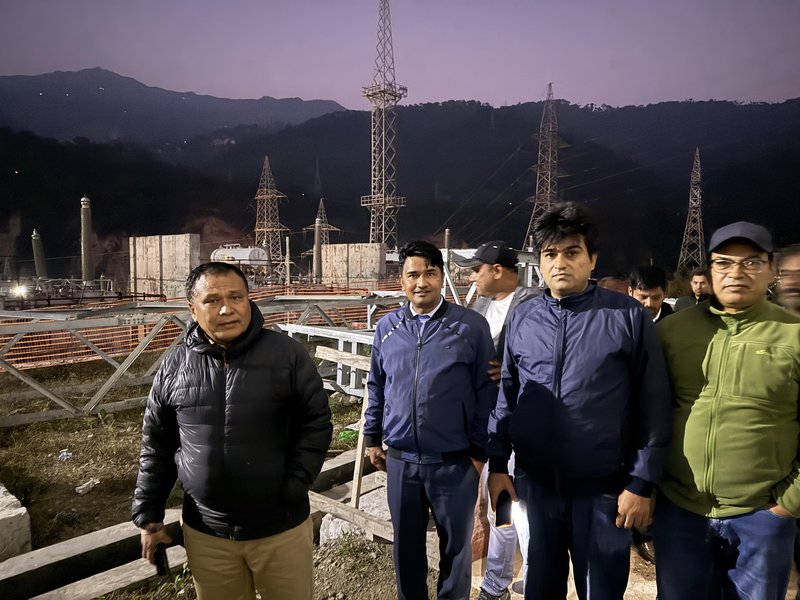
Construction of the building for the control room and GIS equipment is in progress, with equipment connection to follow once civil structures are finished. Overall progress on the substation construction is at around 70 percent, with the project expected to be completed by May of the following year. Nepal Electricity Authority Managing Director Kul Man Ghising visited the site on Saturday and encouraged the project management and construction teams to expedite tasks to meet the planned timeline.
Managing Director Ghising highlighted the significance of the 400 kV Barbise substation in transmitting electricity from hydropower projects in the Balefi and Bhotekoshi river corridor to Dhalkebar through the Bahrbise-Khimti 400 kV transmission line.
He stressed the importance of prioritizing the substation's construction and expediting the remaining work to ensure efficient powersupply to Kathmandu valley during winter and export to India during the rainy season. Ghising also provided updates on the progress of the Khimti, Barabise, and Lapsiphedi 400 kV Substation Project, as well as the Tamakoshi-Kathmandu 220-400 kV transmission line project, which is nearing completion.
Despite challenges faced during the construction of the Khimti-Barabise-Kathmandu transmission line, including land use issues, tree removal, and local opposition, Ghising expressed optimism about its imminent completion.
Currently, 117 out of the 118 towers along the Khimti-Barabise transmission line have completed foundations, and 115 towers have been erected. Additionally, 36 kilometers of cable have been installed, with the final tower under construction. The Khimti-Barabise section is expected to be operational by January of the following year.
Simultaneously, a 46-kilometer, 400 kV double circuit transmission line from Barabise to Lapsiphedi in Kathmandu is also in progress. Of the 122 planned towers for this line, 118 foundations have been laid, and 117 towers have been constructed, with 42 kilometers of wire already installed. The remaining towers are still under construction.
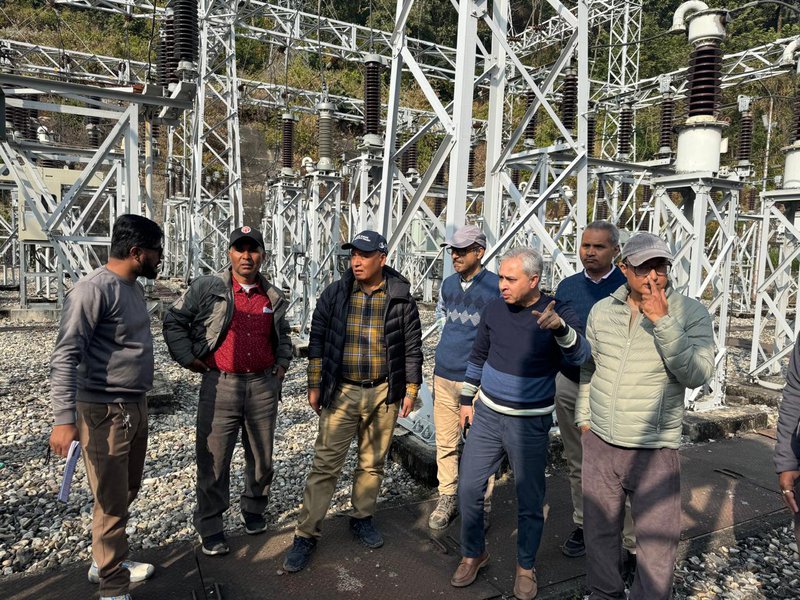
Moreover, the extension of the Lapsiphedi-Changunarayan 132 kV transmission line is ongoing to facilitate power flow from Khimti-Barabise to Kathmandu Valley, despite facing challenges from local community opposition.
Upon completion of the 400 kV transmission line developed by the Millennium Challenge Corporation (MCC), power from Lapsiphedi will be transmitted to the new Butwal substation in Bhumhi, Nawalparasi (BardghatSusta West), Chame, and Tilocho Lake.
Managing Director Ghising has played a key role in overcoming administrative and local obstacles to advance projects during his regular site visits. The ongoing development at the 400 kV Barabise Substation is a clear demonstration of his efforts.
Ghising Directs To Supply Electricity For Fast Track
The Minister and Secretary of the ministry are allegedly plotting to remove MD Ghising from his position, but he remains focused on visiting various sites. After assessing the electricity supply at the Fast Track project, MD Ghising instructed his colleagues to ensure uninterrupted power supply to the project.
The Nepal Electricity Authority (NEA) will provide electricity through alternative means for road construction in Bhimphedi Rural Municipality-8, Mandu Maltabensi, and Indrasarowar Rural Municipality-3, Sisneri Kogate areas of Makawanpur as part of the Kathmandu-Tarai-Madhes Fast Track (KTFT) project.
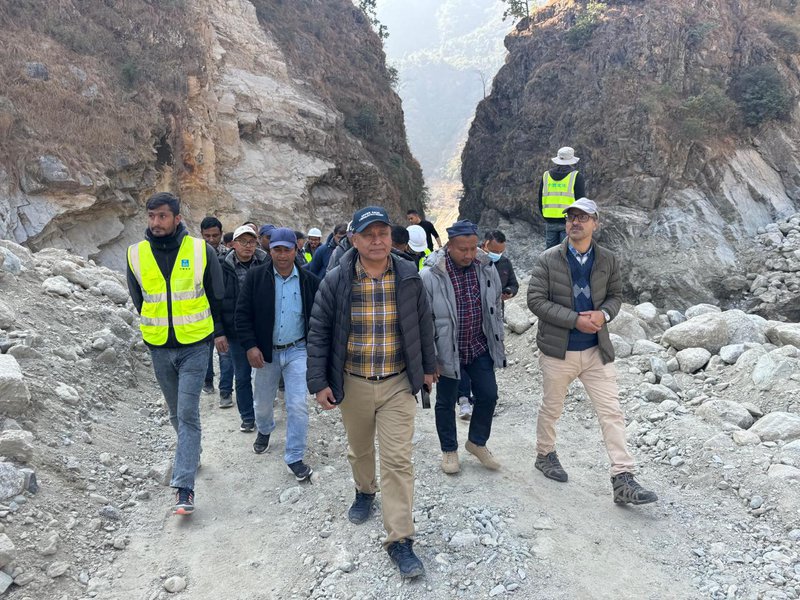
The NEA has already implemented alternative measures to ensure that the Expressway construction is not hindered by power shortages. Household consumers in the area will not face any electricity supply issues.
To prevent delays in the construction of bridges, tunnels, and other structures in the Mandu Maltabensi and Sisneri Kogate areas of the KTFT project, the NEA will provide electricity through alternative means. Approximately 12 MW of electricity will be needed for the construction work in that region, which is divided into four packages.
As part of the alternative power supply plan, the existing 66 kV line from Kulekhani First Hydropower Station, Dhorsing to Mandu will be converted to operate at 11 kV. Additionally, a 22.5 MVA power transformer currently in Kathmandu will be transported to Dhorsing Substation for installation, ensuring adequate power supply for the fast-track project.
The NEA will ensure that the construction of bridges, tunnels, and other structures in the Mandu Maltabensi and Sisneri Kogate areas of the KTFT is not hindered by a lack of electricity by providing alternative power arrangements. Approximately 12 MW of electricity will be needed for the construction work in that area, which is being carried out in four packages. To address this, the
66 kV line from Kulekhani First Hydropower Station, Dhorsing to Mandu will be operated at 11 kV. Additionally, a 22.5 MVA power transformer from Kathmandu will be installed at Dhorsing Substation to provide the necessary power supply for the fast-track project. Due to the current
5 MVA power transformer operating at full capacity at Dhorsing Substation, a new high-capacity transformer will be added to accommodate the additional power flow. T
he 22-megawatt Bagmati Khola Small Hydropower Plant, operated by Mandu Hydropower Ltd., suffered extensive damage from floods and landslides in September, disrupting electricity generation and supply to the KTFT section.
The flood in the Bagmati River washed away the switchyard that transmits electricity generated by the project, as well as the power transformers and other equipment installed by the NEA there.
The electricity generated by the project was transmitted to Dhorsing through a 66 kV transmission line and to Malta Substation in Lalitpur through a 33 kV line.
The electricity was supplied to the KTFT road construction through an 11 kV line from Malta Substation. Another 2 MW Khanikhola Hydropower Project operating in Lalitpur was also connected to Malta Substation.
However, after the flood and landslide damaged Khanikhola, Malta Substation was left without a source of power. As a result, the power supply to the Expressway construction area stopped. Currently, reconstruction of both projects is underway.
After the Nepal Army informed that there was a problem in the construction of the Expressway due to a lack of power supply, a high-level team, including NEA Managing Director Kul Man Ghising, conducted an on-site inspection of the Mandu Maltabensi area on Monday.
The team visited the Bagmati Khola Small Hydropower Project and Dhorsing Substation, currently undergoing reconstruction, and discussed various options with officials for immediate electricity supply. The reconstruction of the project is expected to be completed by mid-April. Once operational, electricity will be supplied according to the previous arrangement.
Ghising suggested adding a power transformer to the Dhorsing Substation and charging the Dhorsing-Mandu line to 11 kV to supply electricity to the fast-track road construction area as suitable interim options.
Ghising emphasized the importance of ensuring that the national pride project is not impacted by the electricity shortage. He urged for alternative supply arrangements until electricity production resumes from the flood-damaged hydropower projects, emphasizing the need for immediate action.
NEA's Deputy Managing Director, Manoj Silwal, instructed the Palung and Hetauda distribution center chiefs to promptly initiate local restoration work on the line.
Despite facing challenges and conspiracies over the last six months, MD Ghising remains committed to inspecting various areas to maintain a reliable power supply for households. By prioritizing consumer needs above his own interests, Ghising ensures customer satisfaction, making his dedication a valuable asset.
- Japanese Ambassador Hosted A Commemorative Event To Honor Tabai Juko 50 Years Of Climbing Mt Everest
- May 23, 2025
- KOICA Organized Consultative Workshop And KOV Handover Ceremony For Its Volunteer Partner Organizations
- May 23, 2025
- Foreign Minister Rana meets with Japanese Foreign Minister
- May 23, 2025
- Weather Forecast: Light To Moderate Rain In Few Places Of Bagmati, Koshi, Madhesh And Lumbini Provinces
- May 23, 2025
- Nepali and Indian Army Joint team climbs Mount Kanchenjunga
- May 22, 2025















